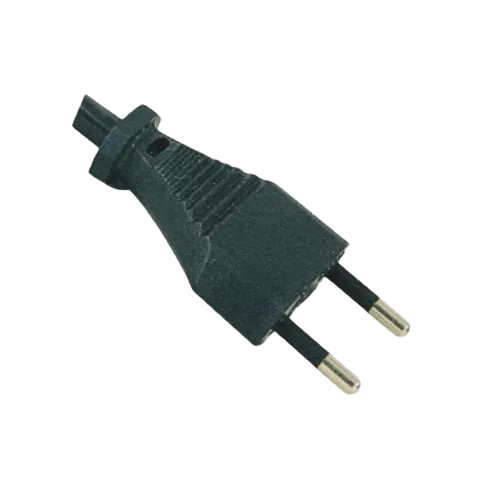Fuse Protection: The UK Standard Power Cord incorporates an integral fuse within the plug, specifically designed to safeguard against overcurrent conditions. The fuse is a critical component that ensures electrical safety by interrupting the circuit if the current exceeds the cord’s rated capacity. Typically, the fuse is calibrated to handle a specific amperage that matches the cord’s intended use, such as 3A, 5A, or 13A. In the event of an electrical fault, such as a short circuit or an overload, the fuse will blow, effectively disconnecting the power supply and preventing potential damage to connected devices and reducing the risk of fire. The fuse is housed in a compartment within the plug that can be easily accessed for replacement, ensuring that the cord remains safe and functional.
Insulation: The conductors inside a UK Standard Power Cord are enveloped in multiple layers of high-quality insulation materials, such as polyvinyl chloride (PVC) or thermoplastic elastomer (TPE). The primary insulation layer surrounds each conductor to prevent accidental contact with live wires, thereby protecting users from electrical shock. This insulation is designed to withstand environmental factors such as moisture, chemicals, and physical abrasion. Additionally, the outer sheath of the cord, which encases the insulated conductors, provides an extra layer of protection against mechanical damage, including cuts, abrasions, and impacts. This comprehensive insulation system ensures the cord remains safe and effective over its lifespan, even in demanding conditions.
Plug Design: The UK plug (Type G) features a robust design with three prongs: live, neutral, and earth (ground). The live and neutral prongs are responsible for carrying the electrical current, while the earth pin ensures that any fault currents are safely directed to the ground. The earth pin is typically longer than the live and neutral pins, ensuring it makes contact first and disconnects last, which enhances safety during insertion and removal. Additionally, the UK plug incorporates built-in safety shutters on the live and neutral prongs, which prevent accidental exposure to the electrical contacts. These shutters automatically close when the plug is not fully inserted, reducing the risk of electric shock and ensuring that the electrical contacts are only accessible when the plug is securely connected.
Grounding: The grounding (earth) conductor within the UK Standard Power Cord plays a crucial role in ensuring electrical safety. It provides a direct path for any fault currents to be safely diverted to the ground, thereby reducing the risk of electric shock and minimizing the potential for electrical fires. This grounding mechanism is essential for the protection of both users and electrical devices. In the event of a fault, such as a short circuit or insulation failure, the grounding conductor facilitates the safe dissipation of electrical energy, ensuring that the fault does not result in dangerous conditions. Proper grounding also helps in stabilizing the electrical system and preventing electrical noise or interference.
Voltage and Current Rating: Each UK Standard Power Cord is manufactured with specific voltage and current ratings that correspond to its intended application. The voltage rating indicates the maximum voltage the cord can safely handle, while the current rating specifies the maximum amount of electrical current it can carry without overheating. For example, a typical UK power cord might be rated for 230V and 13A. Adhering to these ratings is crucial to prevent overheating, insulation breakdown, and potential fire hazards. Using a cord with appropriate ratings for the connected device ensures safe and reliable operation and protects against electrical faults that could compromise safety.
Y2-10 British standard two-core extension power cord



 English
English عربى
عربى











